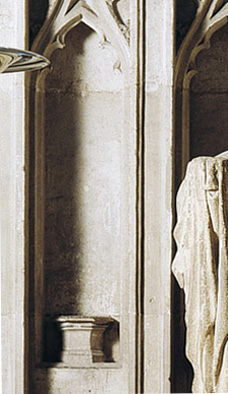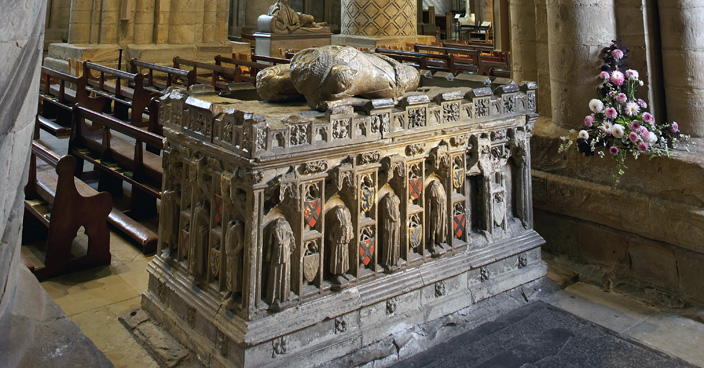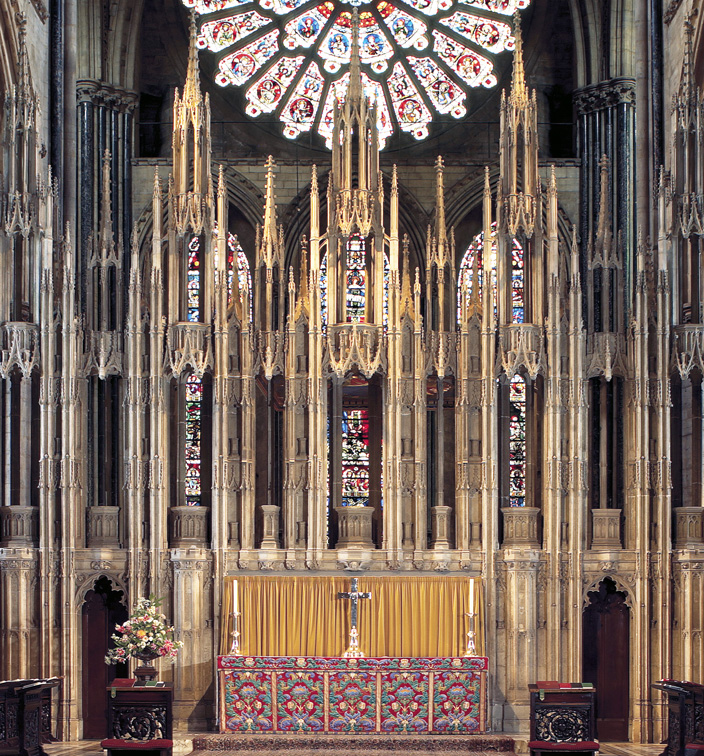
The Neville Screen is so visually appealing as a piece of gothic architecture that it is easy to overlook the fact that its 107 sculptures, hidden during the Reformation, would probably have been its pieces de resistance. Empty pedestals like the one shown here are a reminder of its original design.
© Durham Cathedral and Jarrold Printing
The gift of Lord John Neville who is buried in the Cathedral among with other members of his family, the Neville Screen was commissioned for Durham Cathedral from Henry Yevele – the most renowned master mason in England at the time. It is reported to have cost 500 marks.
The screen was manufactured in London using stone that probably came from Caen in France. It was then packed in crates and sent by sea to Newcastle. From there, it was taken to Durham by wagon and erected in 1380 – a process which took seven masons almost a year of work.
How the Screen Looked in 1380
Impressive as a fine piece of gothic sculpture, the screen is today bereft of the 107 statues that would have once been its most striking features.
During the Reformation, these were removed by the monks of Durham to prevent their destruction. They were probably hidden somewhere for safekeeping, but have never been found.
Historic accounts mention that a statue of the Virgin was to be found on the central pedestal, flanked by St Cuthbert and St Oswald (under the two other spires).
Originally, the screen would have brightly painted and gilded.

The Nevilles were a notable local family whose name is indelibly etched in Durham's history due to their role in the English victory of 1346 against the Scots, tellingly known as the battle of Neville's Cross. The screen earned the then Lord Neville, John, the privilege of being buried inside the Cathedral nave, a rare honour.
© Durham Cathedral and Jarrold Printing

View of the Neville Screen, a masterpiece both in terms of design and execution.
© Durham Cathedral and Jarrold Printing

